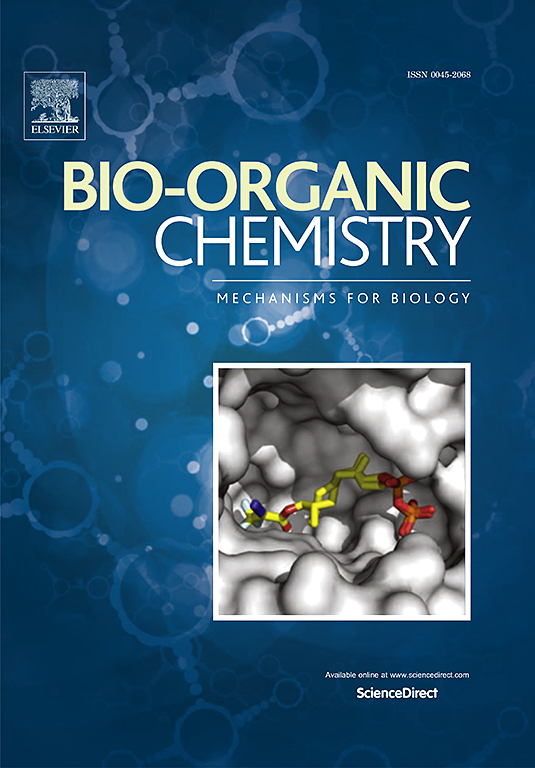GSH-responsive paclitaxel prodrug used in chemotherapy in combination with photodynamic therapy
IF 4.5
2区 医学
Q1 BIOCHEMISTRY & MOLECULAR BIOLOGY
引用次数: 0
Abstract
The lack of targeting and poor solubility of anti-tumor drugs are two major limitations to the outcome of tumor therapy. To address the inherent drawbacks, we designed a novel prodrug of paclitaxel (PTX), HP-PTX. This HP-PTX prodrug contains a PEGylated heptamethylene cyanine dye (PEG-IR808–1) that was conjugated to PTX via a redox-sensitive disulfide bond. The moiety of IR808–1 acts as a tumor-targeting ligand, enabling HP-PTX not only to target tumor cells, but also to localize to mitochondria and generate ROS under 808 nm laser irradiation to wound cellular mitochondria thus exerting cytotoxic effect. Meanwhile, in vitro cellular uptake assays showed that HP-PTX possesses MCF-7 cell tumor targeting specificity which was attributed to the preferential uptake of heptamethine cyanine dye mediated by the overexpressed organic anion-transporting polypeptides (OATP) on MCF-7 cell membrane. Near-infrared in vivo imaging showed that incorporation of polyethylene glycol effectively prolonged prodrug's half-life in vivo. In addition, in vivo experiments showed that with combinational therapy strategy HP-PTX was able to kill cancer cells with high efficiency (69.52 %) without notable toxic side effects compared to PTX. These results are evidence of the potential of the tumor-targeting prodrug HP-PTX for the treatment of breast cancer.

求助全文
约1分钟内获得全文
求助全文
来源期刊

Bioorganic Chemistry
生物-生化与分子生物学
CiteScore
9.70
自引率
3.90%
发文量
679
审稿时长
31 days
期刊介绍:
Bioorganic Chemistry publishes research that addresses biological questions at the molecular level, using organic chemistry and principles of physical organic chemistry. The scope of the journal covers a range of topics at the organic chemistry-biology interface, including: enzyme catalysis, biotransformation and enzyme inhibition; nucleic acids chemistry; medicinal chemistry; natural product chemistry, natural product synthesis and natural product biosynthesis; antimicrobial agents; lipid and peptide chemistry; biophysical chemistry; biological probes; bio-orthogonal chemistry and biomimetic chemistry.
For manuscripts dealing with synthetic bioactive compounds, the Journal requires that the molecular target of the compounds described must be known, and must be demonstrated experimentally in the manuscript. For studies involving natural products, if the molecular target is unknown, some data beyond simple cell-based toxicity studies to provide insight into the mechanism of action is required. Studies supported by molecular docking are welcome, but must be supported by experimental data. The Journal does not consider manuscripts that are purely theoretical or computational in nature.
The Journal publishes regular articles, short communications and reviews. Reviews are normally invited by Editors or Editorial Board members. Authors of unsolicited reviews should first contact an Editor or Editorial Board member to determine whether the proposed article is within the scope of the Journal.
 求助内容:
求助内容: 应助结果提醒方式:
应助结果提醒方式:


